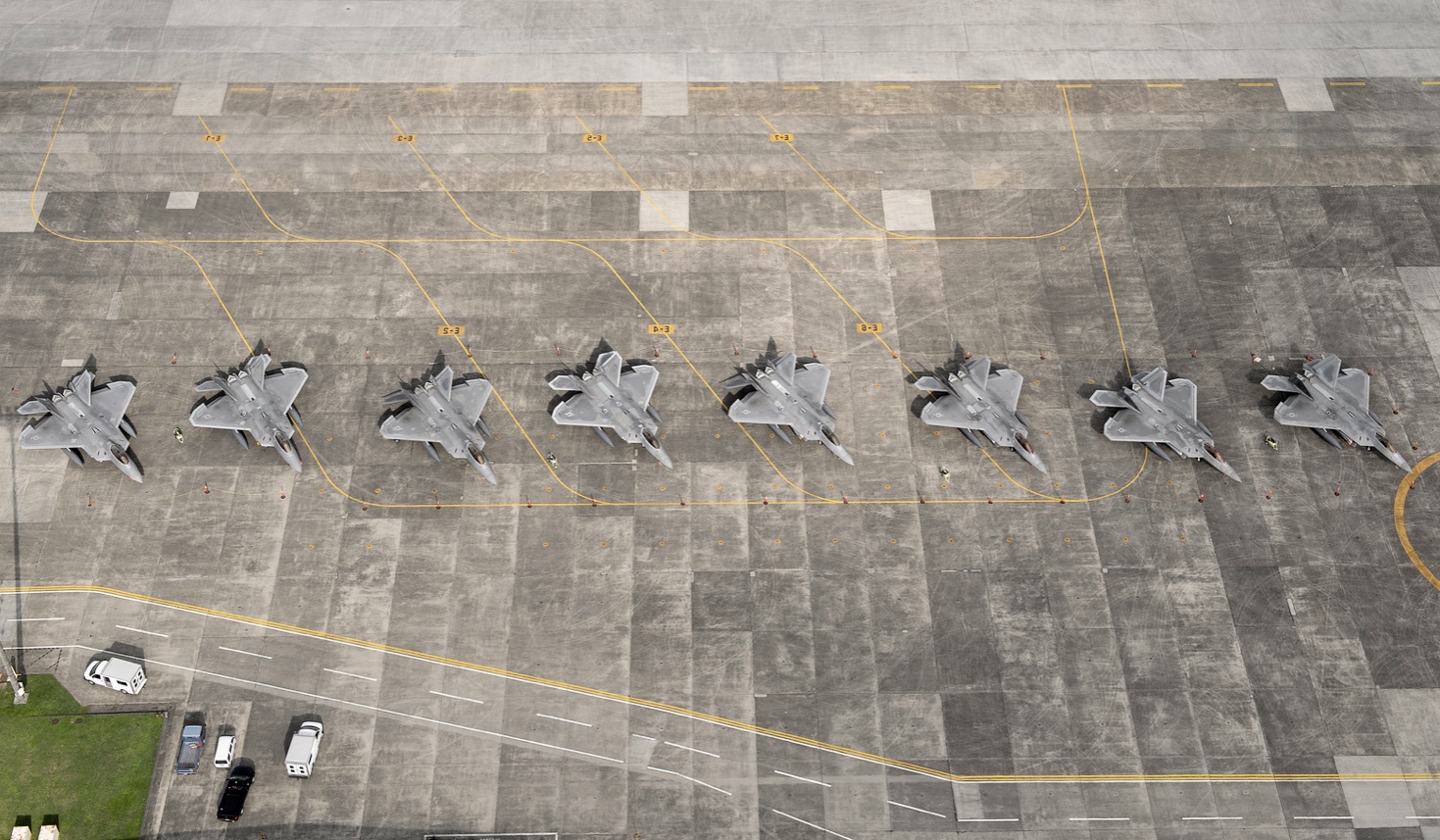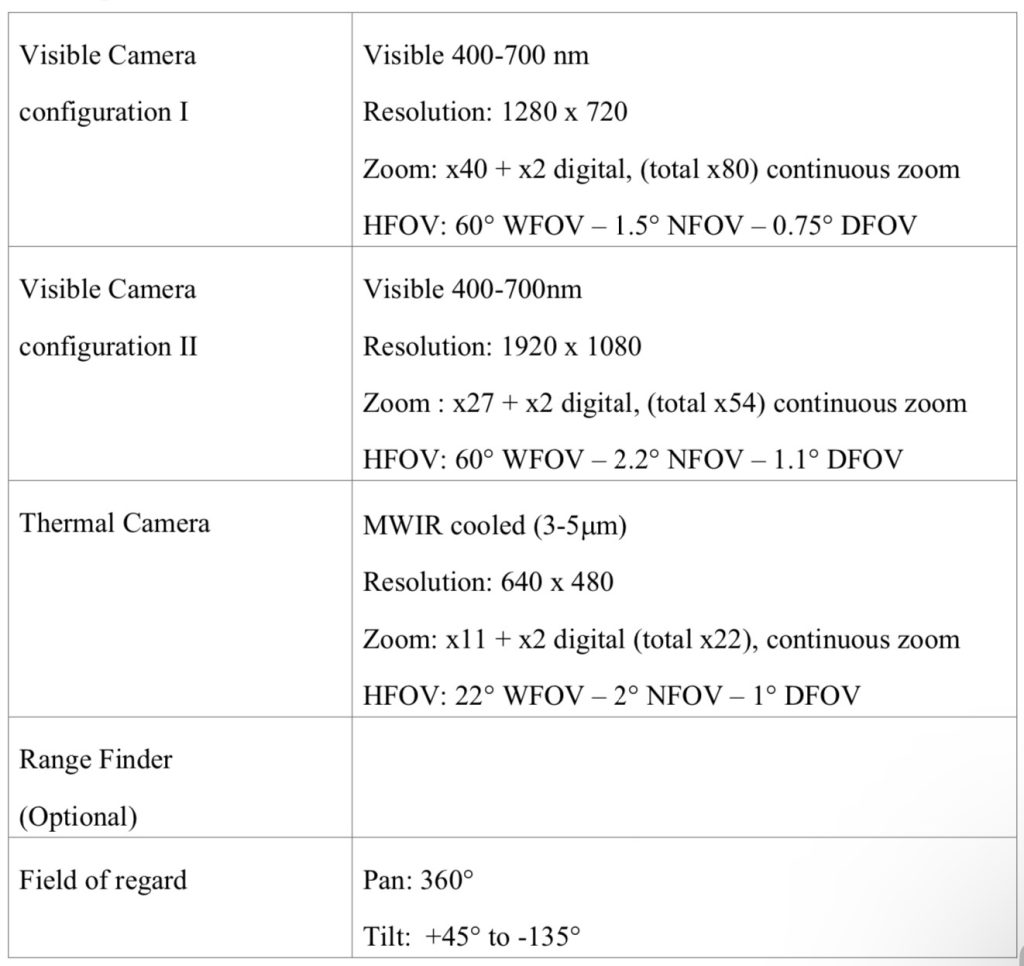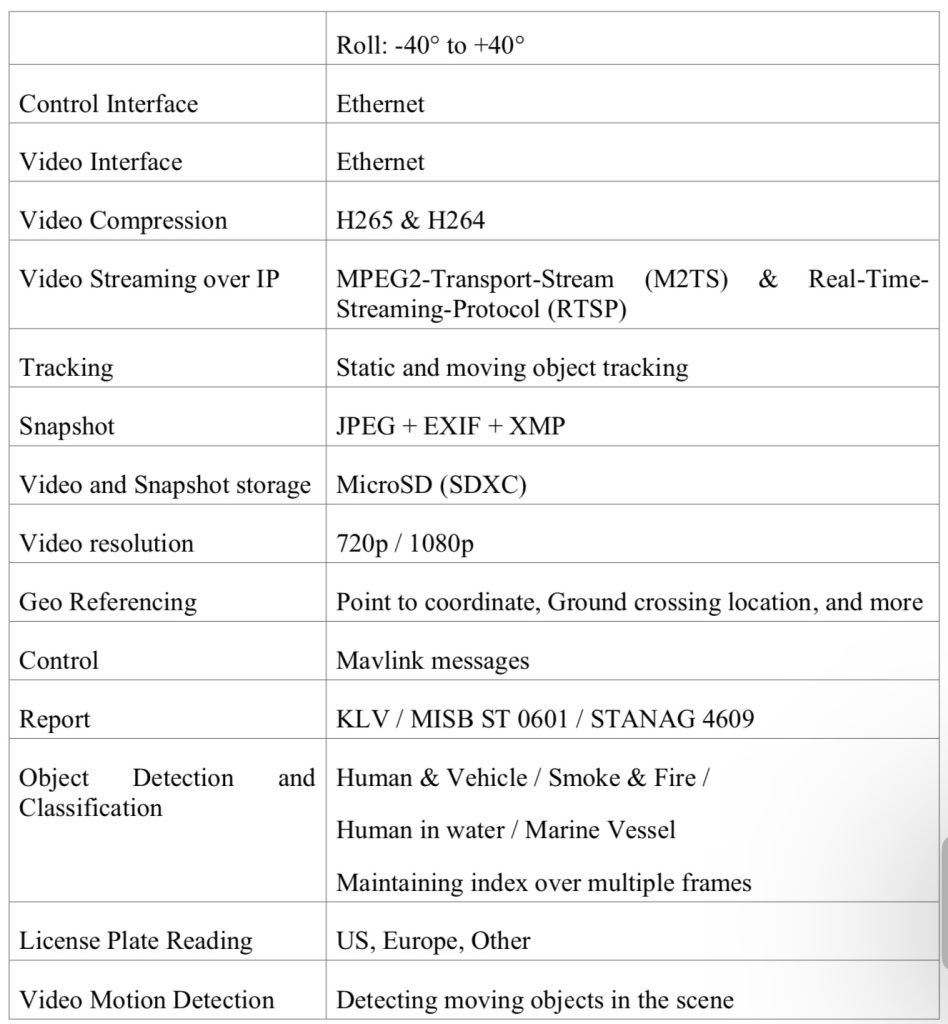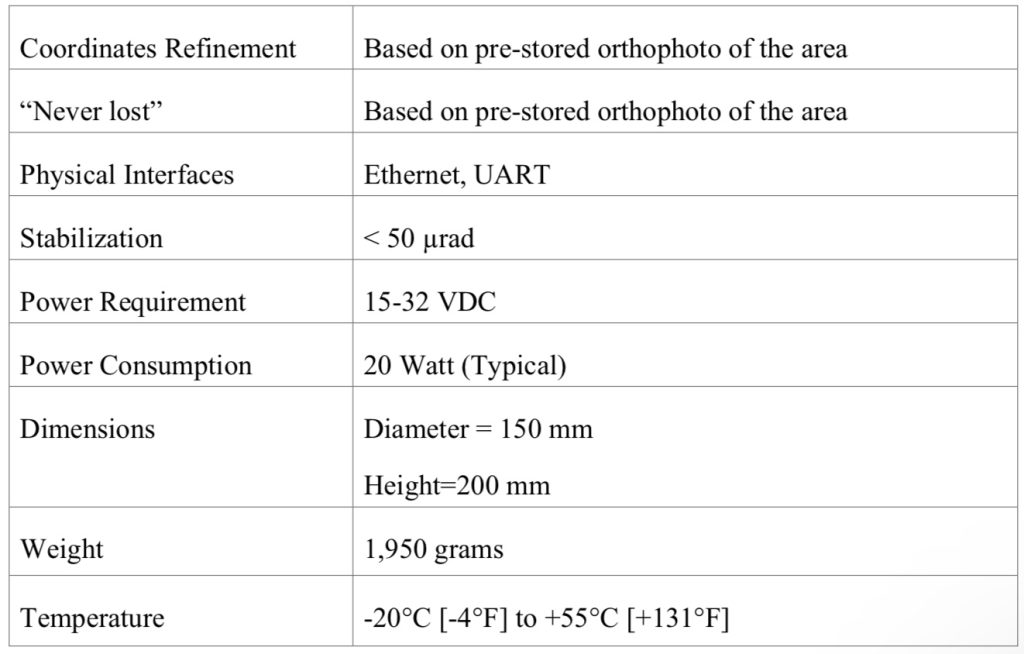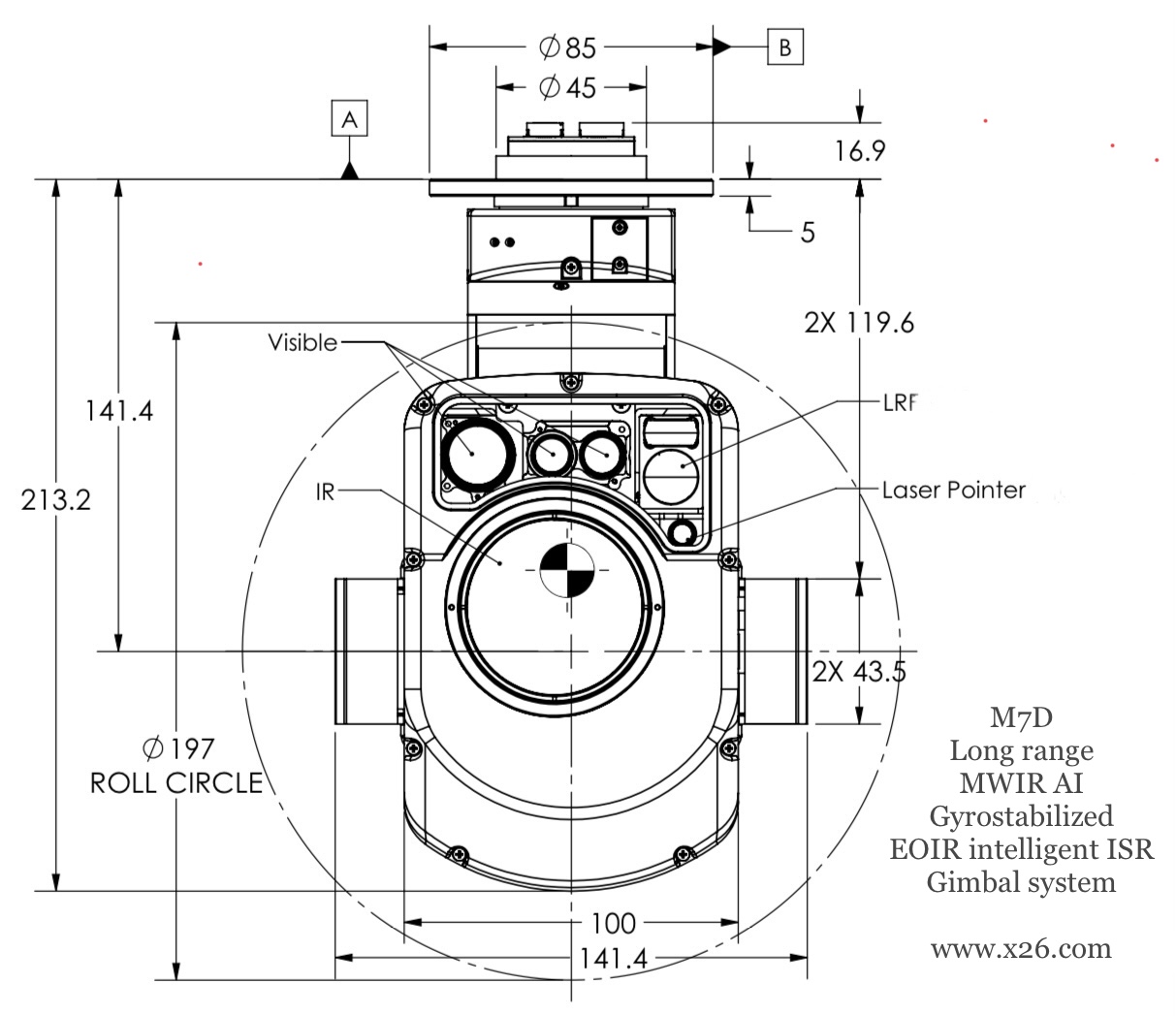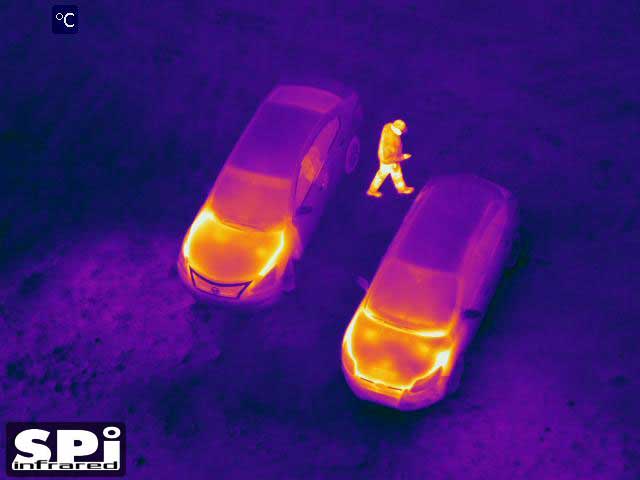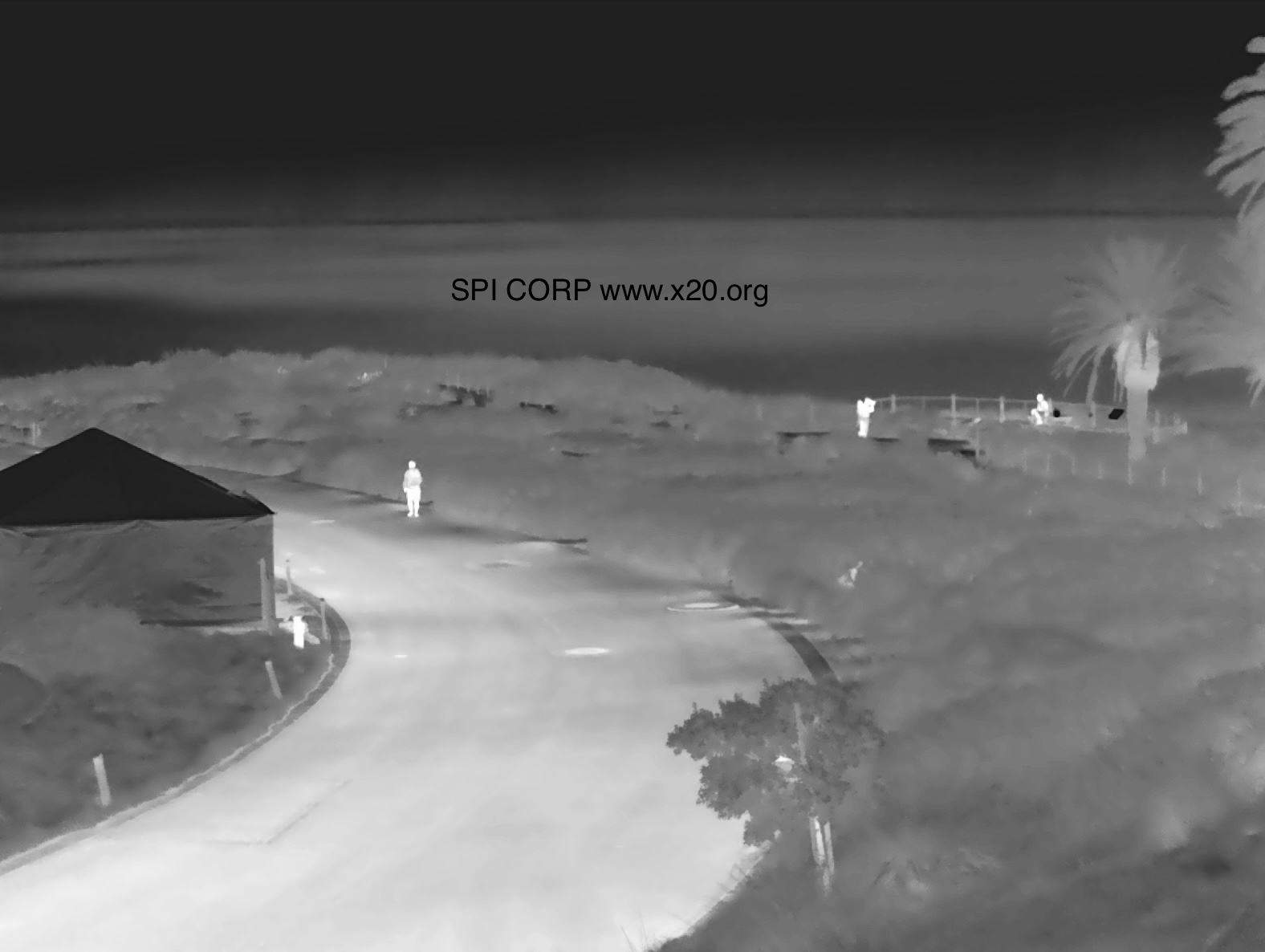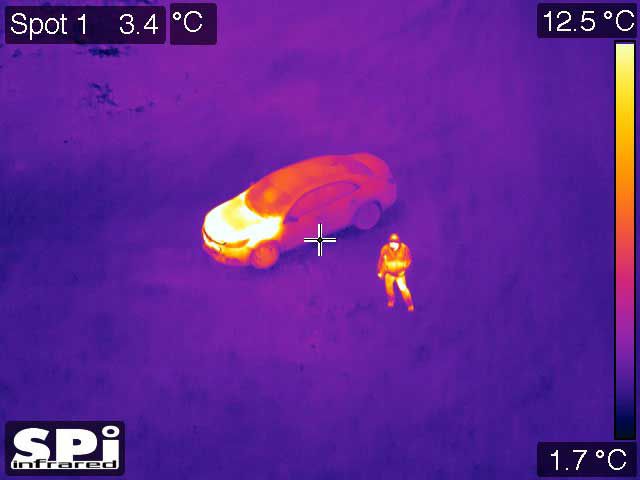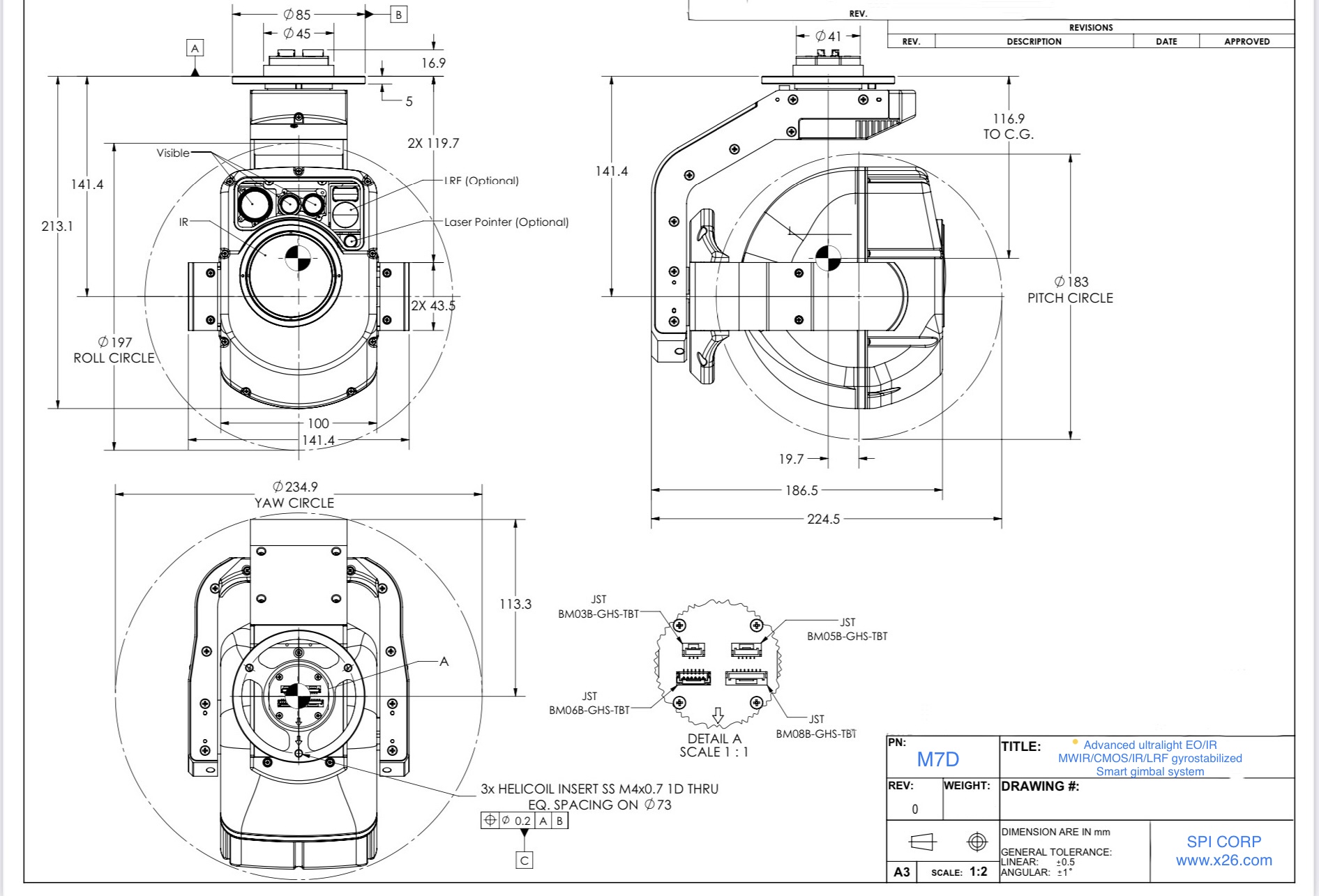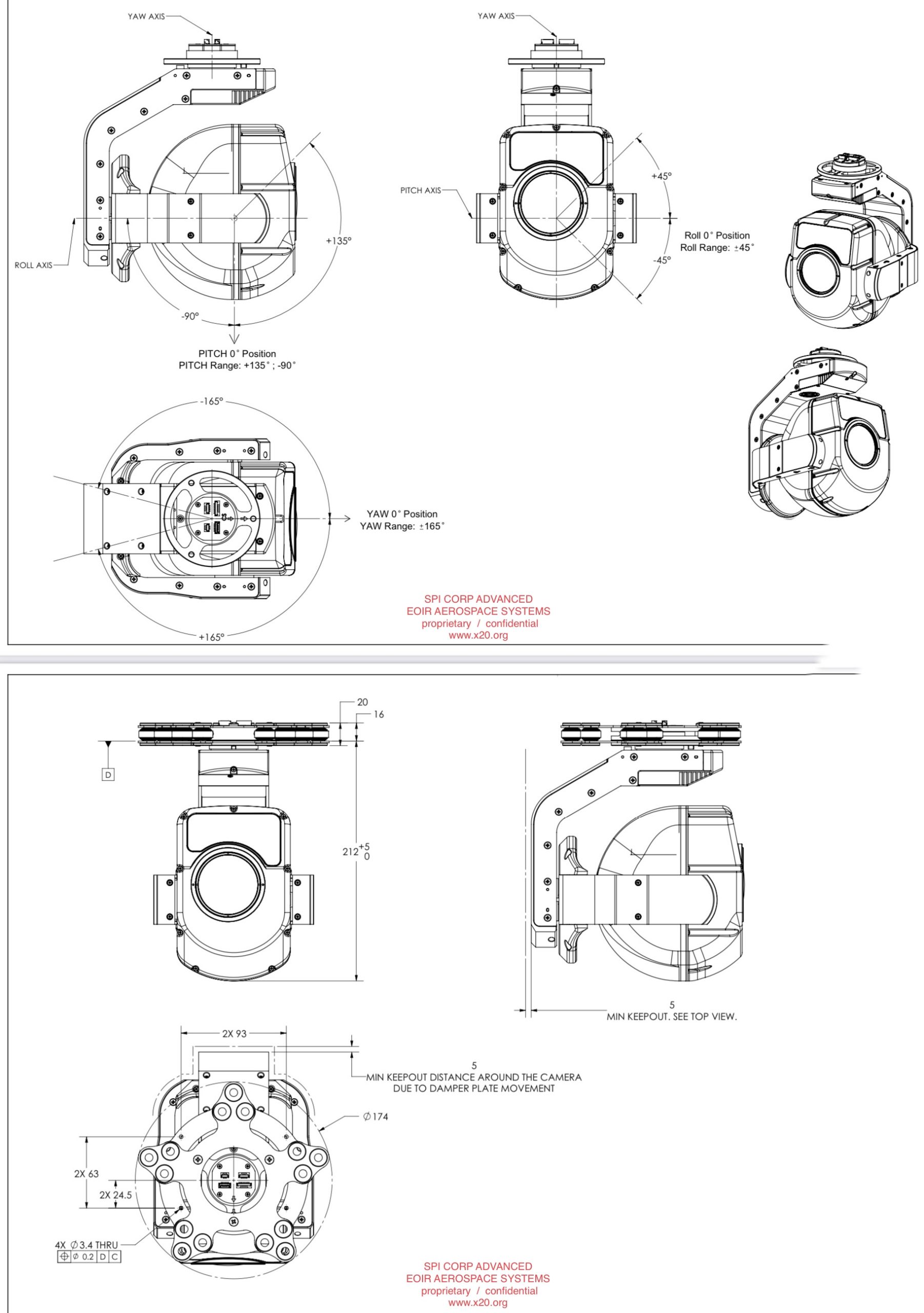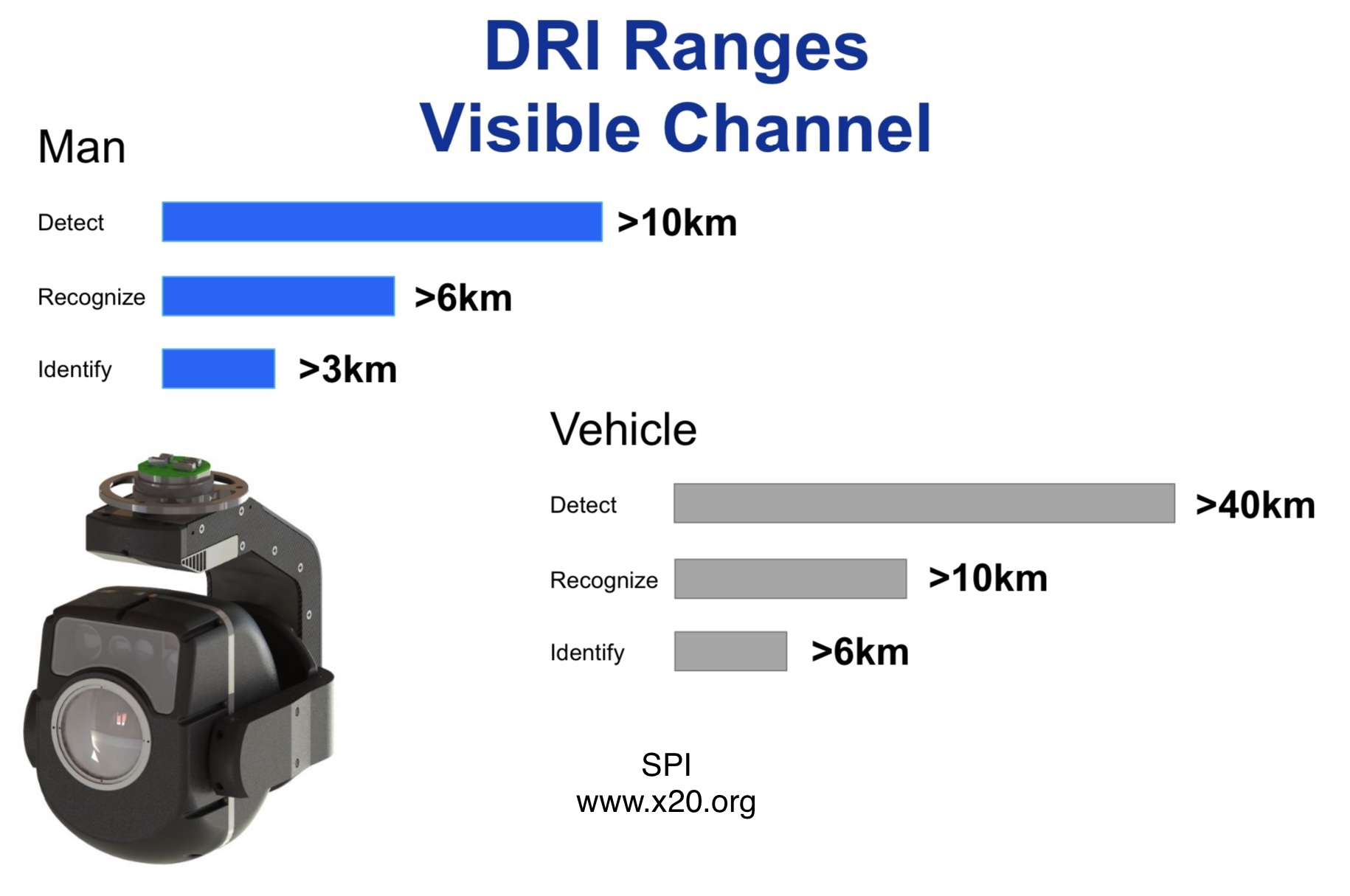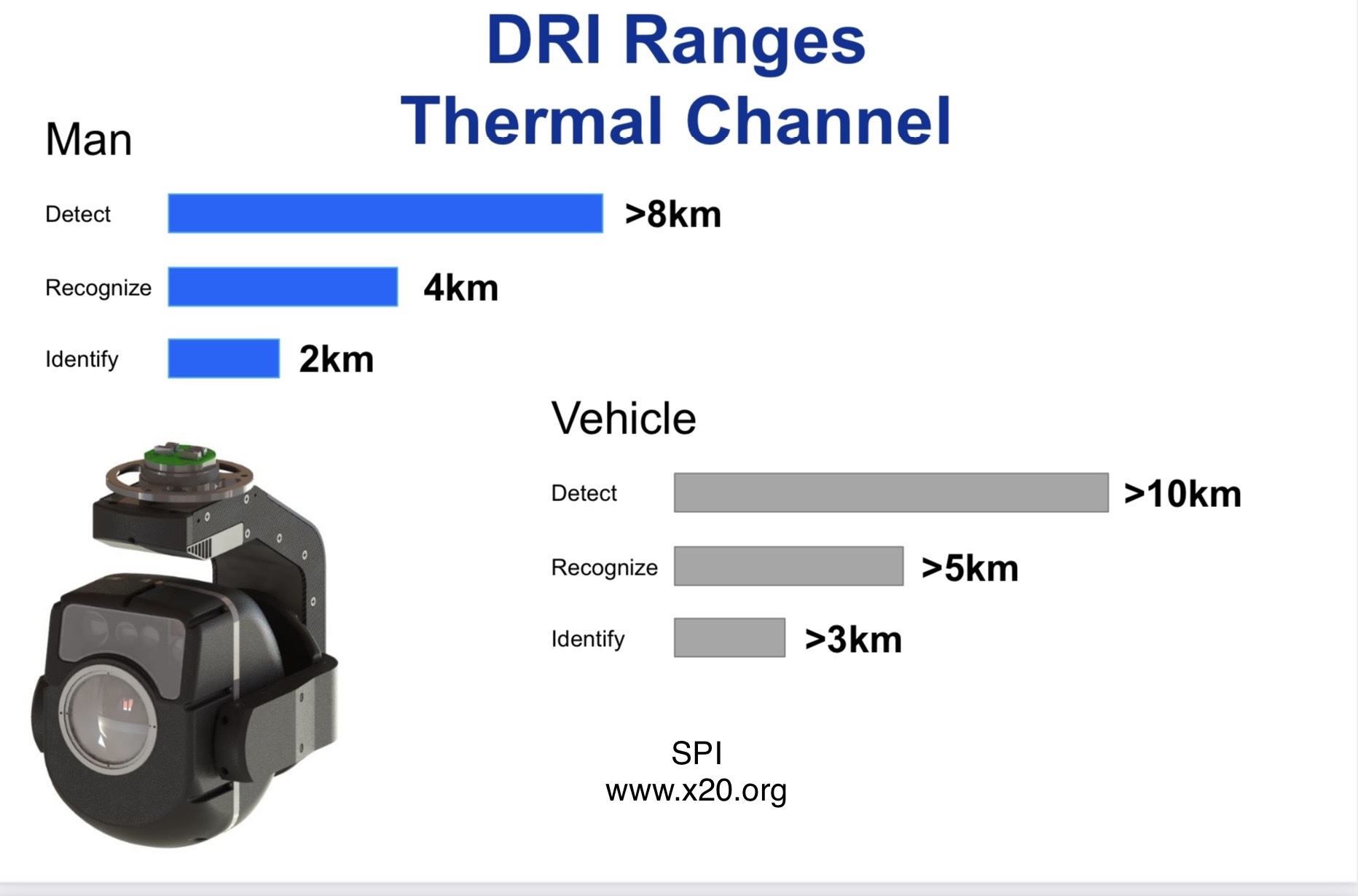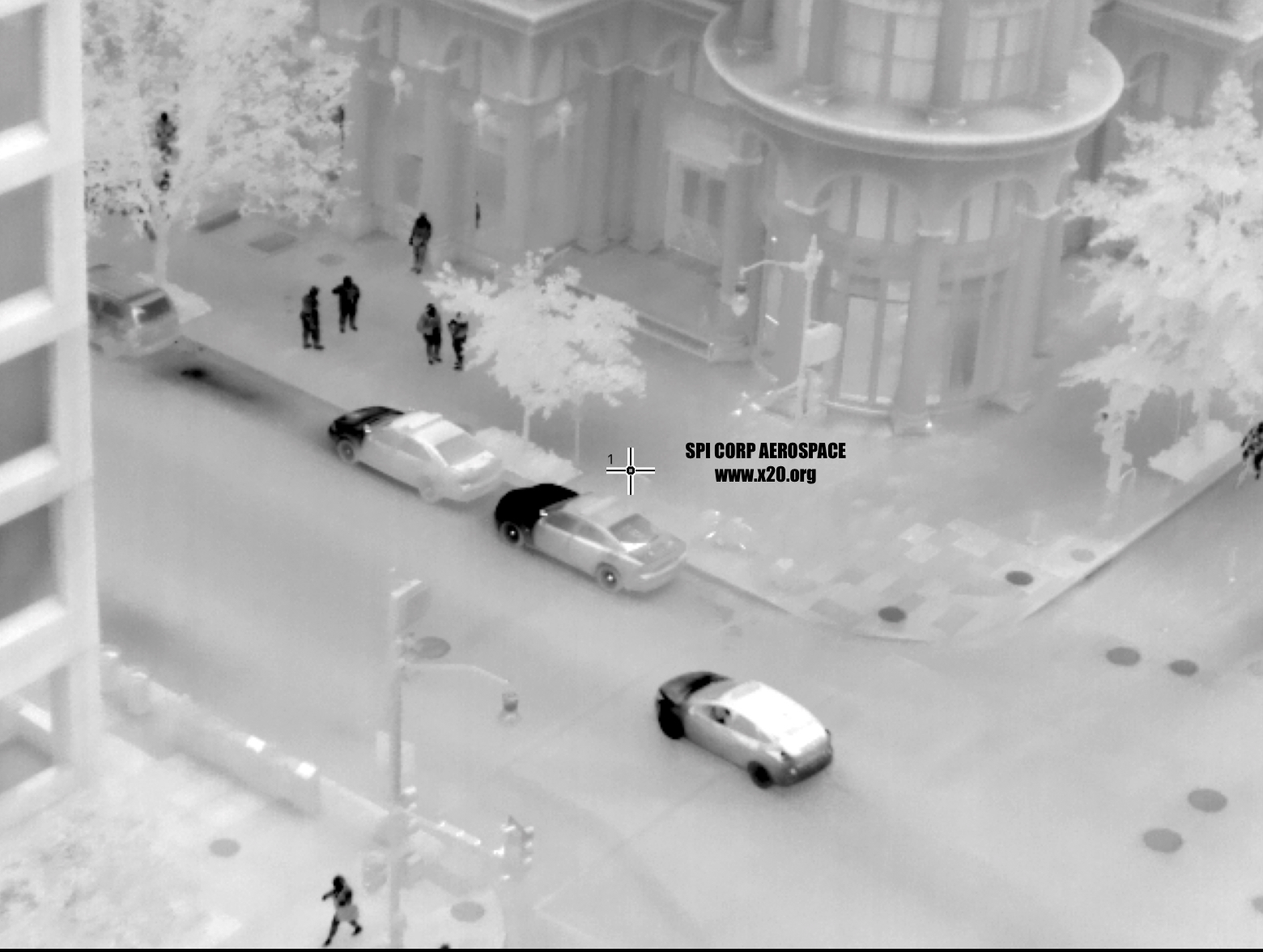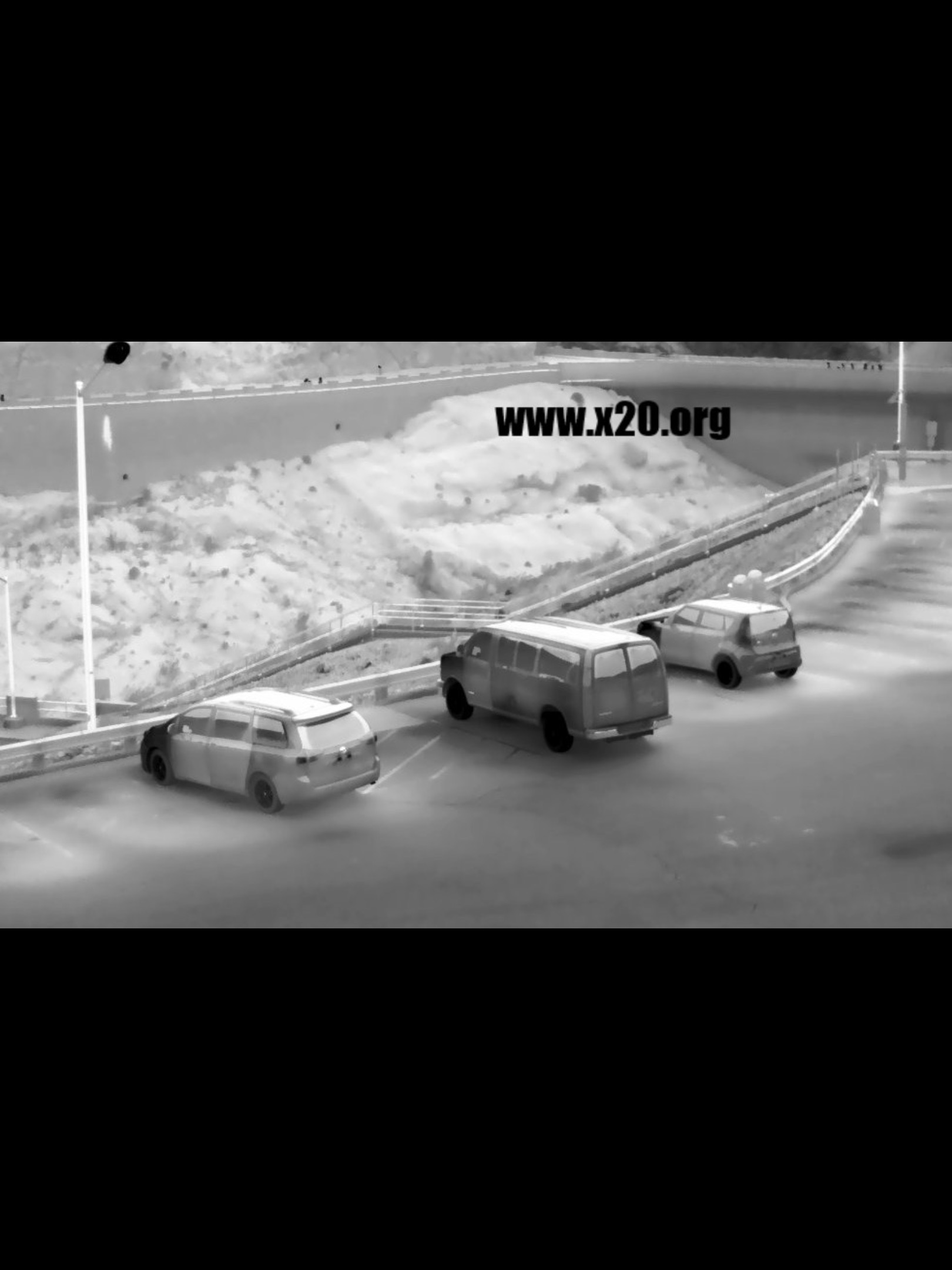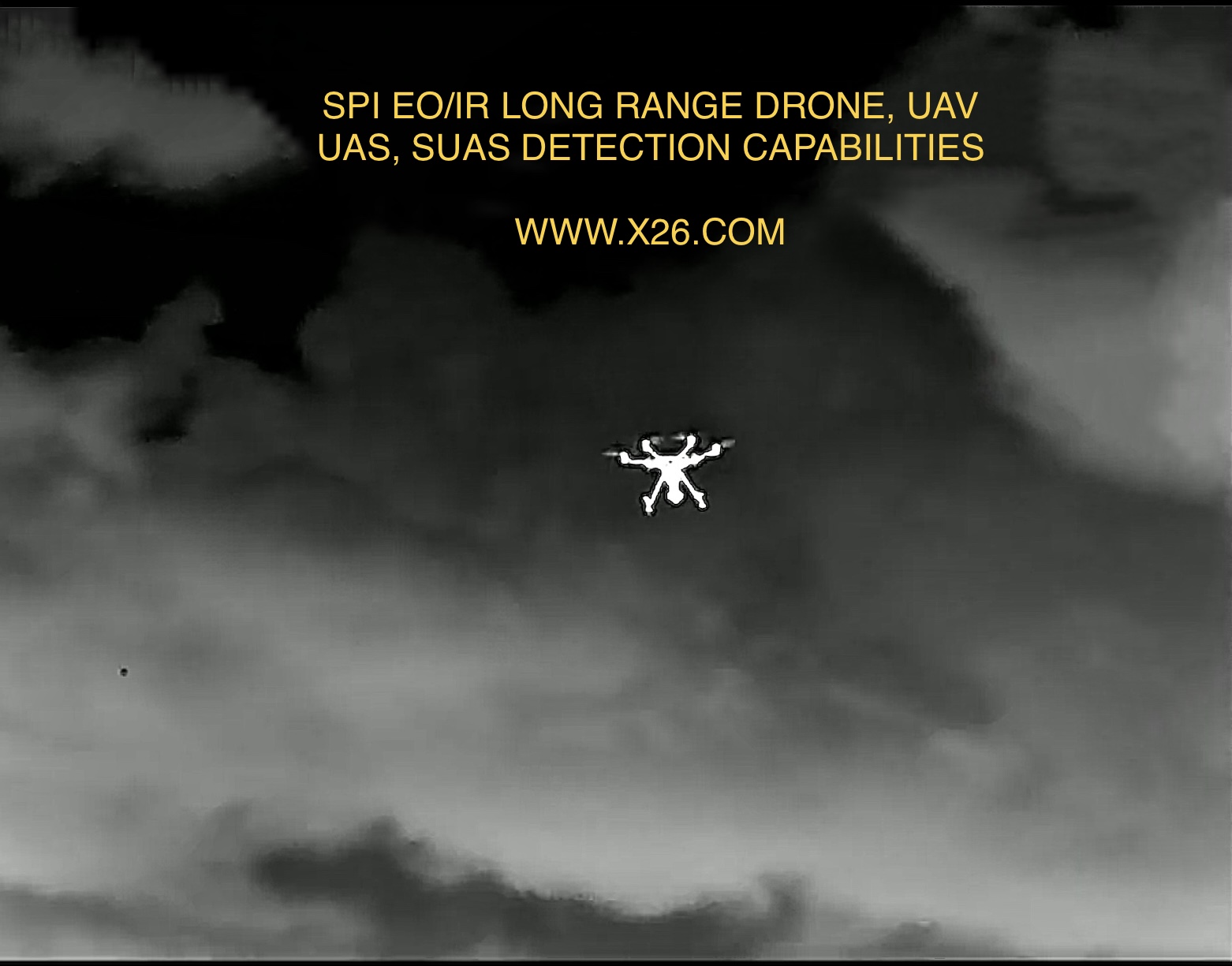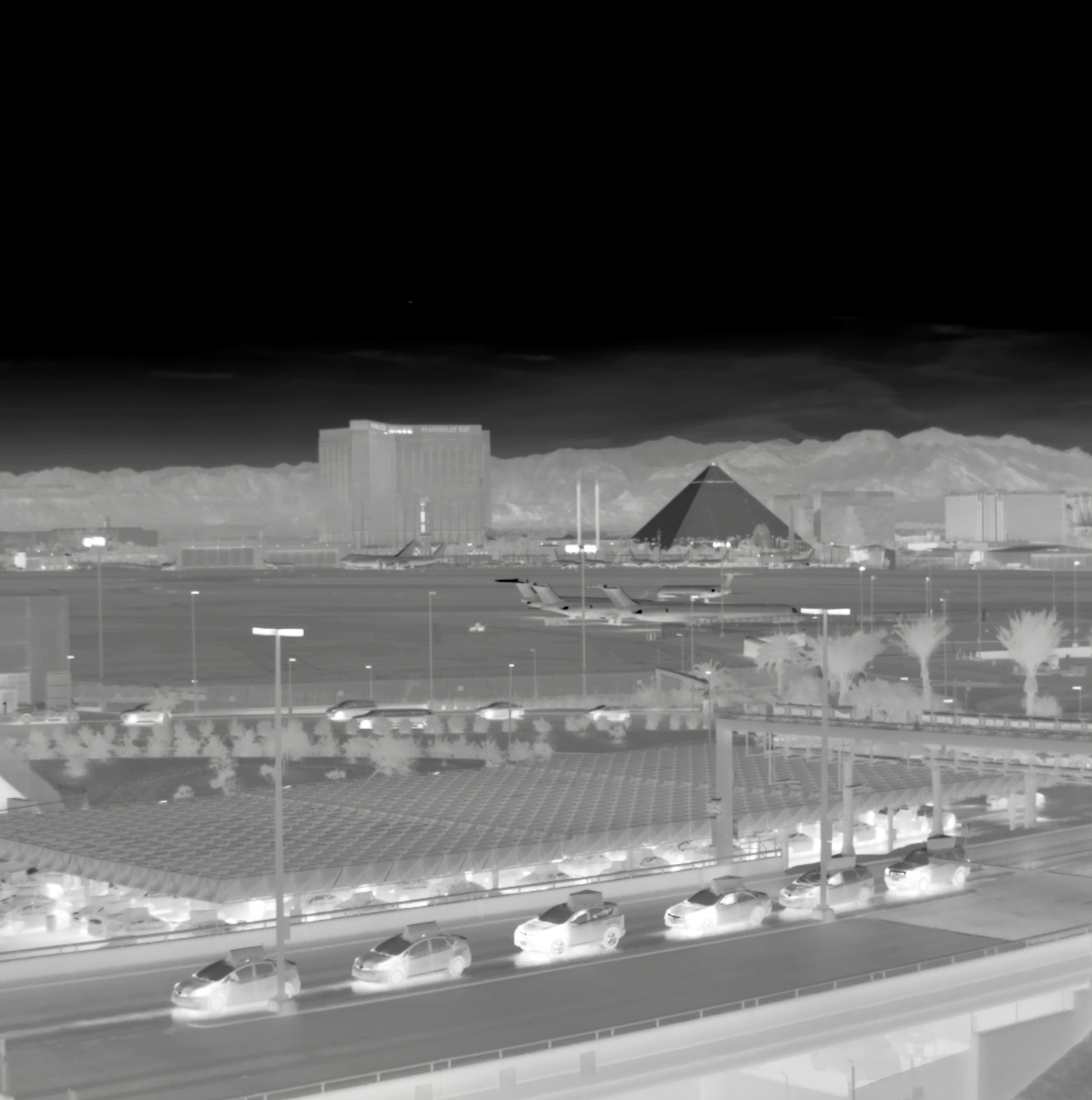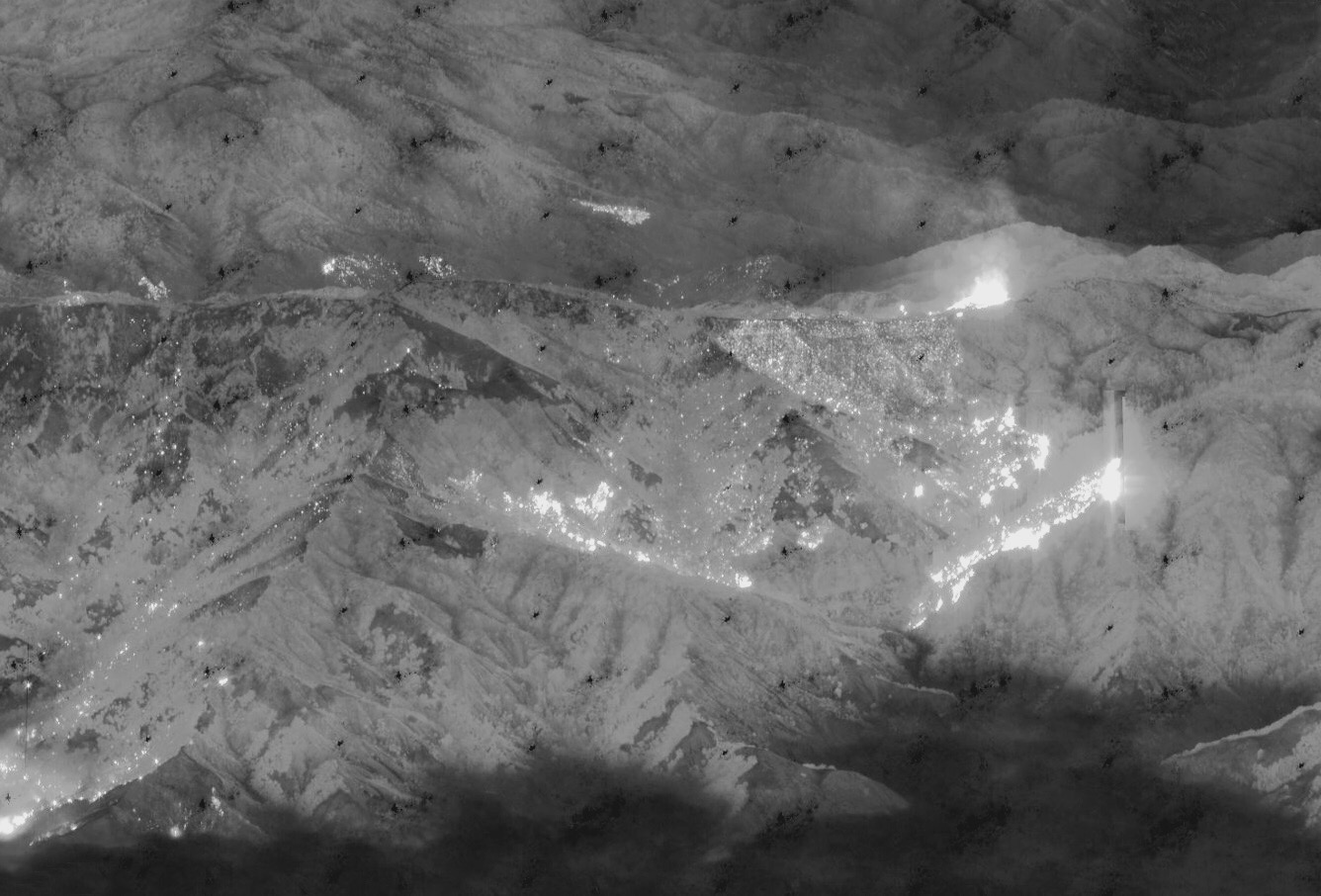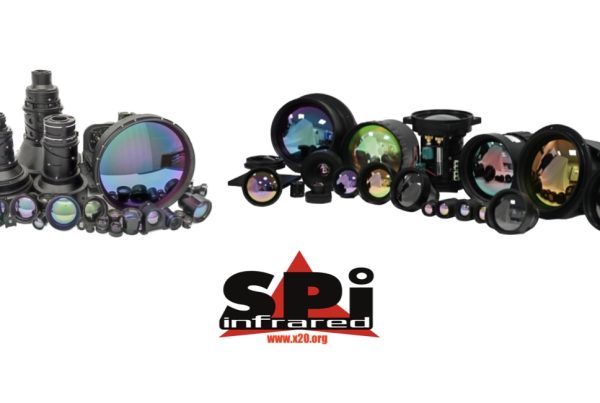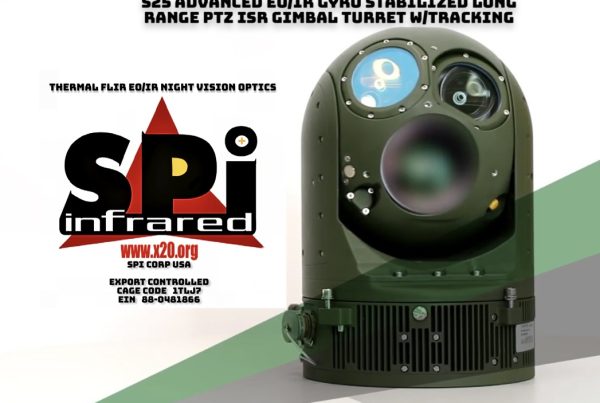Long range cooled mwir EO IR zoom HD gyrostabilized multi axis drone thermal imaging flir camera gimbal with laser and LRF rangefinder tracking for human/vehicles.
 The M7D is the latest advancement in ultralight, day/night-vision micro mini low
The M7D is the latest advancement in ultralight, day/night-vision micro mini low
cost – long range zoom IR cooled MWIR thermal imaging gimbal with
complimentary 82X HD EO camera,
a laser rangefinder and laser pointers are available to compliment this
robust 1790 gram powerhouse.
MWIR gimbals are a sophisticated electro optical payload system. The long DRI distance capable M7D combines high performance, long life, long range, ruggedness, lightweight in a micro mini envelope, with exceptional detection, recognition, identification properties all at the lowest price.
No other long range gyro stabilized cooled FLIR Thermal ISR EOIR MID-WAVE Infrared MWIR 3 to 5 µm gimbal camera payload can compete with the M7D.

LOWEST PRICED, lightest, smallest LONG RANGE
1790 GRAM (1.7 KG) MWIR (MID WAVE IR 3-5 Um)
continuous zoom HD MWIR COOLED EO/IR GIMBAL with rangefinder and AI tracking
CLICK HERE FOR A WIDE ASSORTMENT OF SYSTEMS
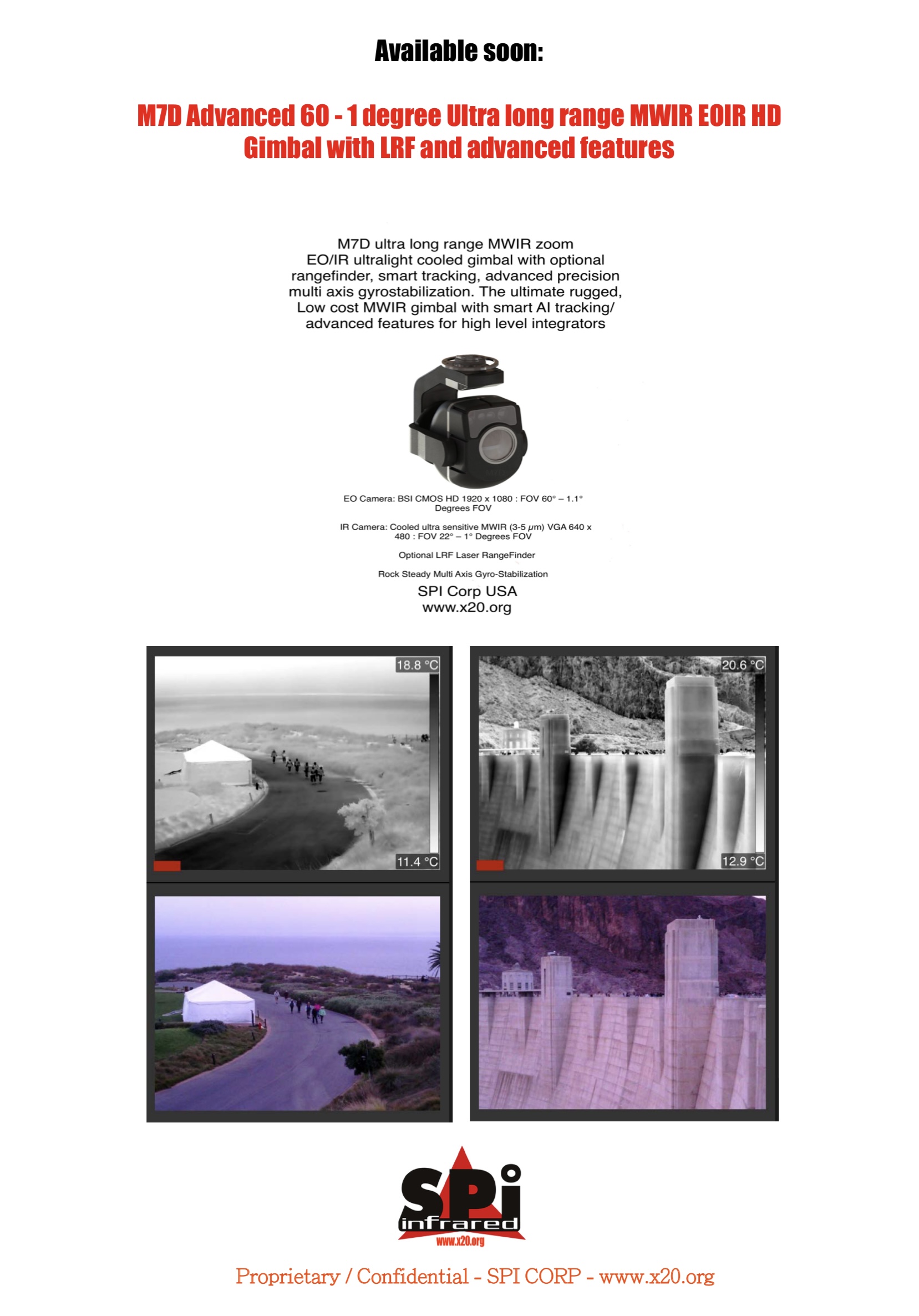
Long range cooled mwir EOIR zoom HD gyrostabilized multi axis drone thermal imaging flir gimbal with laser and LRF rangefinder for UAS uav drones
M7/D Mwir cooled ISR long range gyroscopic stabilized eoir thermal gimbal
with rangefinder and tracking is ideal for tethered aerostats, all class fixed and rotary win manned and unmanned platforms, drones, USV, UAV.
if your mission requires the highest quality, highest performing, longest range miniature stabilized day/might – Geo locating / rangefinding gimbal turret, the M7D is a prime solution.
SPECIFICATIONS
INCLUDED INTELLIGENT FEATURES
Advanced capabilities, EO/IR object tracking, geo location, video compression, IP Streaming, video recording, LTE, and license plate recognition capabilities. EO/IR object tracking directs the M2D gimbal to precisely track a subject within the gimbals range, ensuring the subject of interest never leaves the view. Geo location captures the position of the M2D, its line of sight, and extracts location of observed objects with unprecedented accuracy. Video compression and IP encapsulation provides significantly low latency compression enabling long range operation. The system records high quality video with GPS metadata attached and keeps snapshots to a MicroSD card for simple access and expansion.
H1 – Human & Vehicle Detection and Classification License is offered to M7D long range gimbal system users. H1 detects and classifies humans, private vehicles and small trucks in the video. H1 will mark the detected object on the image (OSD) and will describe its type. In addition, H1 will send a report message upon detection and classification. If the image includes multiple objects, H1 will mark and report all of them.
F1 – Fire & Smoke Detection and Classification, license is offered to M7D long range gimbal system users. F1 detects and classifies fire and smoke in the video. F1 will mark the detected object on the image (OSD) and will describe its type. In addition, F1 will send a report message upon detection and classification. If the image includes multiple objects, F1 will mark and report all of them.
H2 Human Overboard Detection and Classification, license is offered for M7D long range gimbal system users. H2 detects and classifies human in water at the video. H2 will mark the detected object on the image (OSD) and will describe its type. In addition, H2 will send a report message upon detection and classification. If the image includes multiple objects, H2 will mark and report all of them
Additional capability offered by the 3 above listed features is to zoom in on the object upon detection and initiate object tracking. The System can determine the platform’s location when GPS is not available and maintain an object’s index across multiple frames.
The cooled long life MWIR M7D advanced 3-5 µm midwave infrared gimbal is the worlds lowest cost, lightest, smallest, longest range advanced HD EO/IR stabilized gimbal system with advanced features, LRF, Laser. At 1790 grams, this powerhouse has 20 kilometer detection capabilities and offers exceptional industry best EO-IR image quality with the best sensitivity available. Rock solid gyro stabilization ensures accurate target location, detection, identification and recognition at extended distances.
H265 versus H264
Object tracking
License plate reading
The MVP 9960 and 9965 can identify a vehicle’s license plate and display it on the OSD (On Screen Display), in addition, the information can be sent to the GCS (Ground Control Station) through a system report. License plate formats from various countries are supported, including the US and EU.
VIS/IR PIP DuoZoom / Fusion / Side by Side
Coordinate Refinement
Docker
LossLess
Image Enhancement
The M2D ultralight drone thermal flir gimbal gyro stabilized imaging system can easily be mounted on Quad/multi copters and platforms like the DJI Phantom UAV, The M2D Mounts
to all DJI UAV’s and All commercial and custom drones. The M2D micro mini, rugged EOIR gimbal is also ideal for short, mid, and long range zoom remote sensing applications on fixed wing and rotary aircrafts.
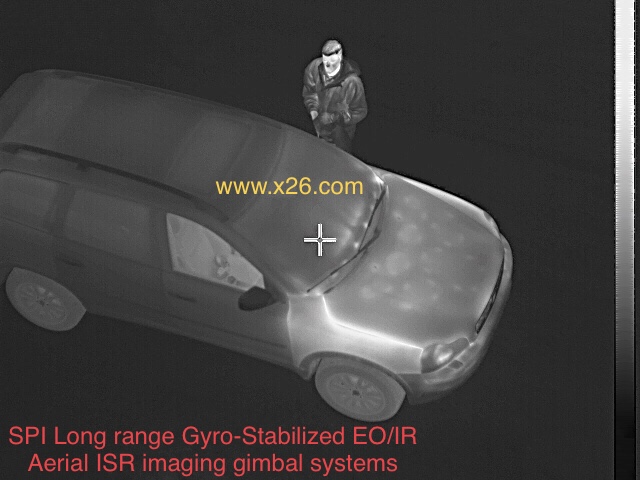
Background: Military unmanned vehicles UAV’s of today and tomorrow rely heavily on electro-optical EO Infrared IR sensor payloads to perform their missions.
These are the sensors that detect light in many different spectra, and enable unmanned vehicles to see. Electro-optical Infrared EOIR payloads are the sensors
that enable unmanned vehicles (UAV/UAS/DRONE) to see and avoid obstacles, detect movement, navigate accurately, find the enemy, and warn of the potential
for buried improvised explosive devices (IEDs). Designers of electro-optical Infrared Thermal EOIR – T sensor payloads for unmanned vehicles are under intense
pressure to evolve their technologies to keep pace with fast-moving trends in the unmanned vehicles industry. Perhaps in no other market are needs for ever-smaller,
lighter, and less expensive payloads as urgent as they are in the unmanned vehicles business. Small size, weight, and power consumption-known by its ubiquitous
acronym SWaP-is a paramount concern.
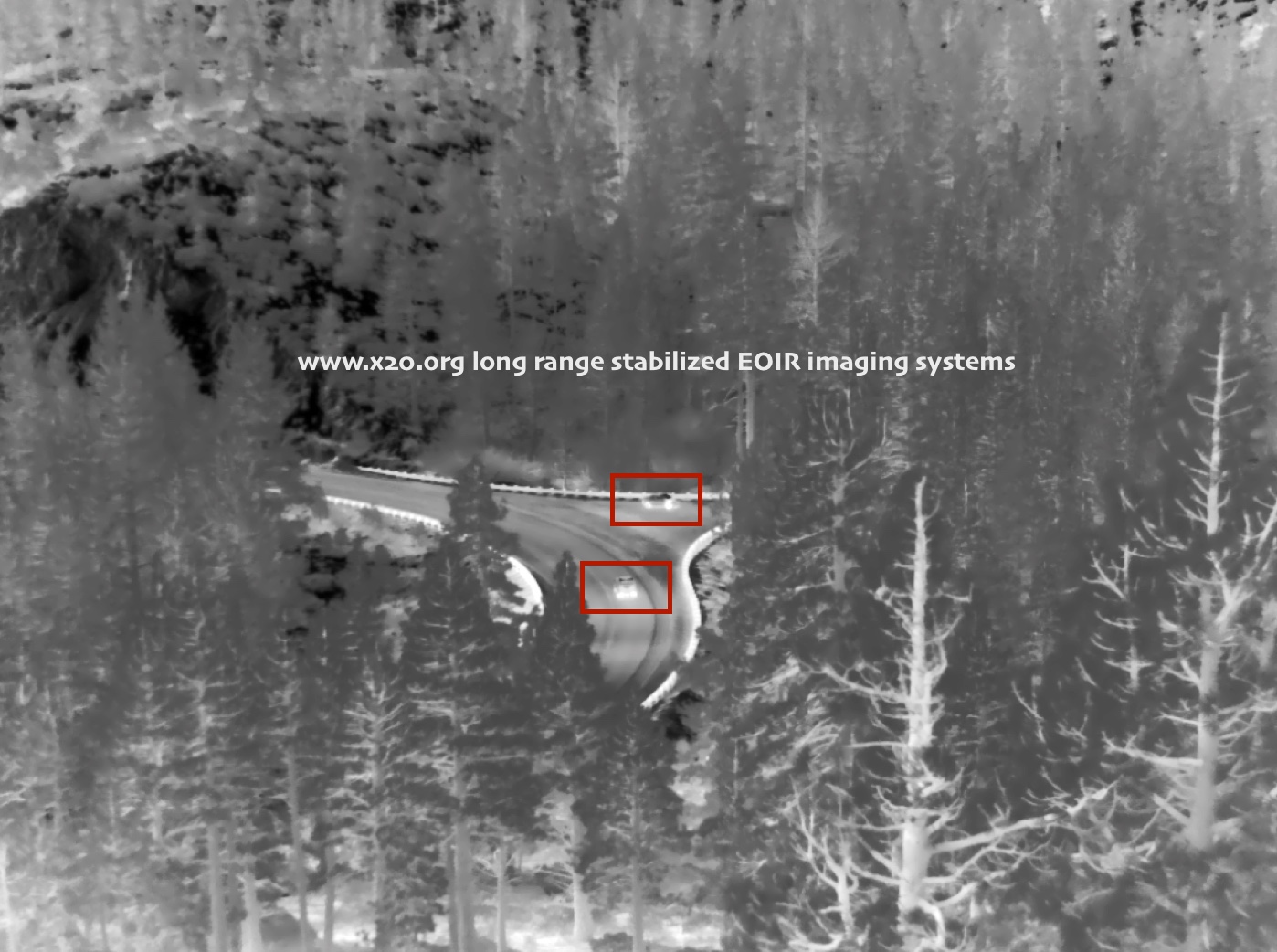
Unmanned systems, UAV’s Uas, Suas, Drones, Unmanned Robots, especially the airborne variety, are proliferating at an explosive rate, and demand is extending
beyond the military to more cost-sensitive industries such as law enforcement, agriculture, commercial remote sensing, traffic monitoring, and sporting events.
Put simply, a growing number of people need unmanned vehicles that are small, inexpensive, and reliable, and they need electro-optical sensor payloads to match.
Not only is there demand for ever-smaller, lighter, and less expensive electro-optical Infrared IR (thermal FLIR imaging, Thermal imaging IR Infrared Camera)
Gimbal Turret payloads, but demand for capability also is increasing.
As electro-optical and electronic component technology becomes smaller, lighter, and more affordable, payload designers sometimes have the option of choosing
between smaller size and weight, or more capability. Sometimes they strive to do both, and this presents some interesting possibilities in design tradeoffs.
Unmanned aerial vehicles (UAVs) are at the forefront of unmanned vehicle research, development, and procurement. Although no less important than
unmanned ground vehicles (UGVs) and unmanned marine vehicles, it is the UAV that is setting the agenda for unmanned electro-optical sensor payloads.
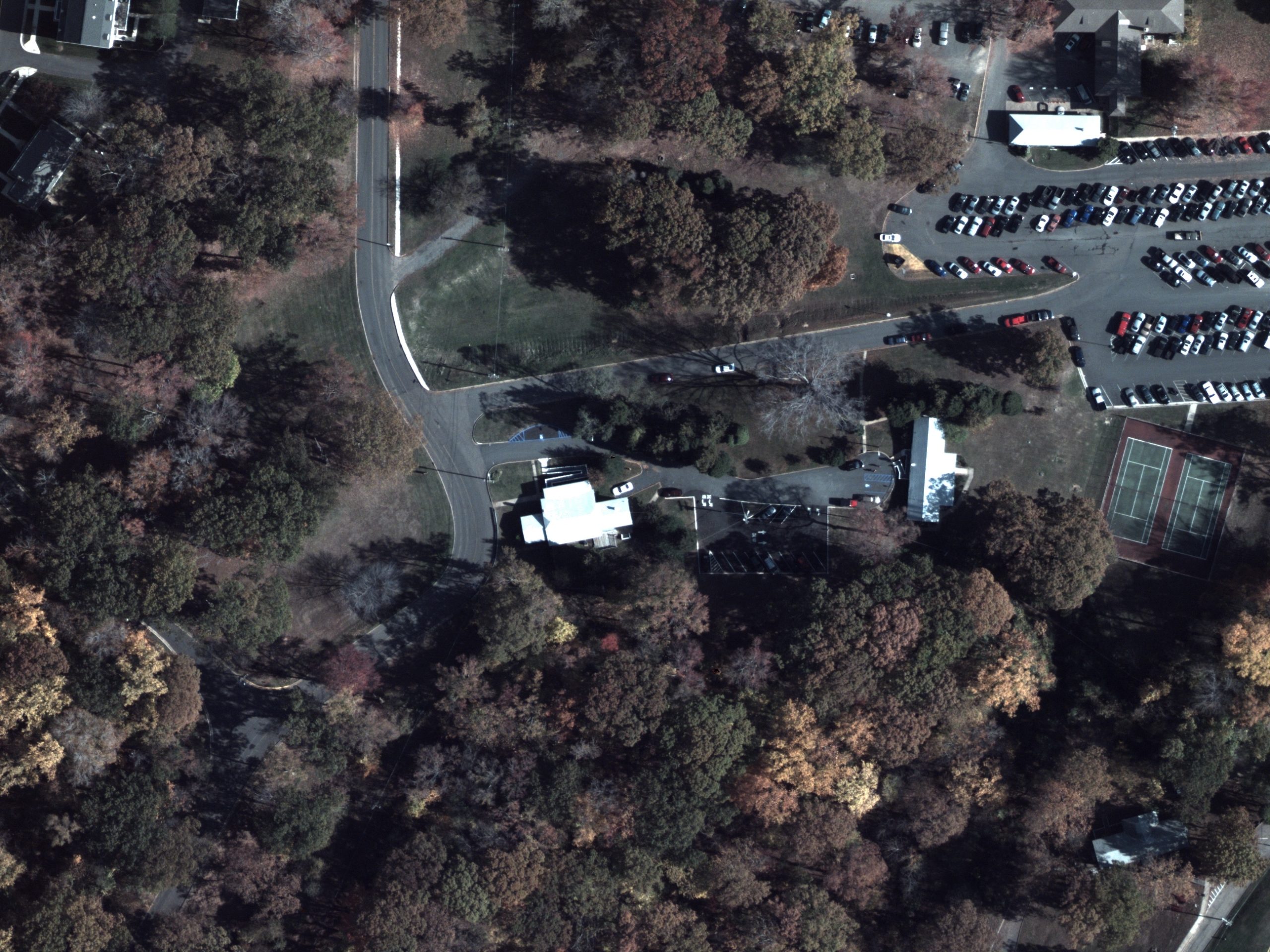
At the top of that UAV/UAS/Drone/Robot agenda is a broad trend toward large and growing numbers of relatively small UAVs that can provide local-area
and short-duration surveillance-the kinds of UAVs that can provide squad leaders a view over the next hill.
In the not-too-distant past there was a big push on developing sensor technology, and size and weight didn’t matter because DOD had large aircraft like
Global Hawk and Predator, as well as manned aircraft, hyperspectral imaging sensors are small and rugged enough to fit on relatively small UAVs.
Hyperspectral imaging is a sophisticated discipline that samples a wide variety of bandwidths in the light spectrum to provide a rich data set and detect
objects of interest not visible to single-bandwidth imaging sensors.
The key element to to reduce size and weight, that is Key!
Engineers started with a very small gimbal, and added high-definition visible-light video along with hyper spectral sensor payload.
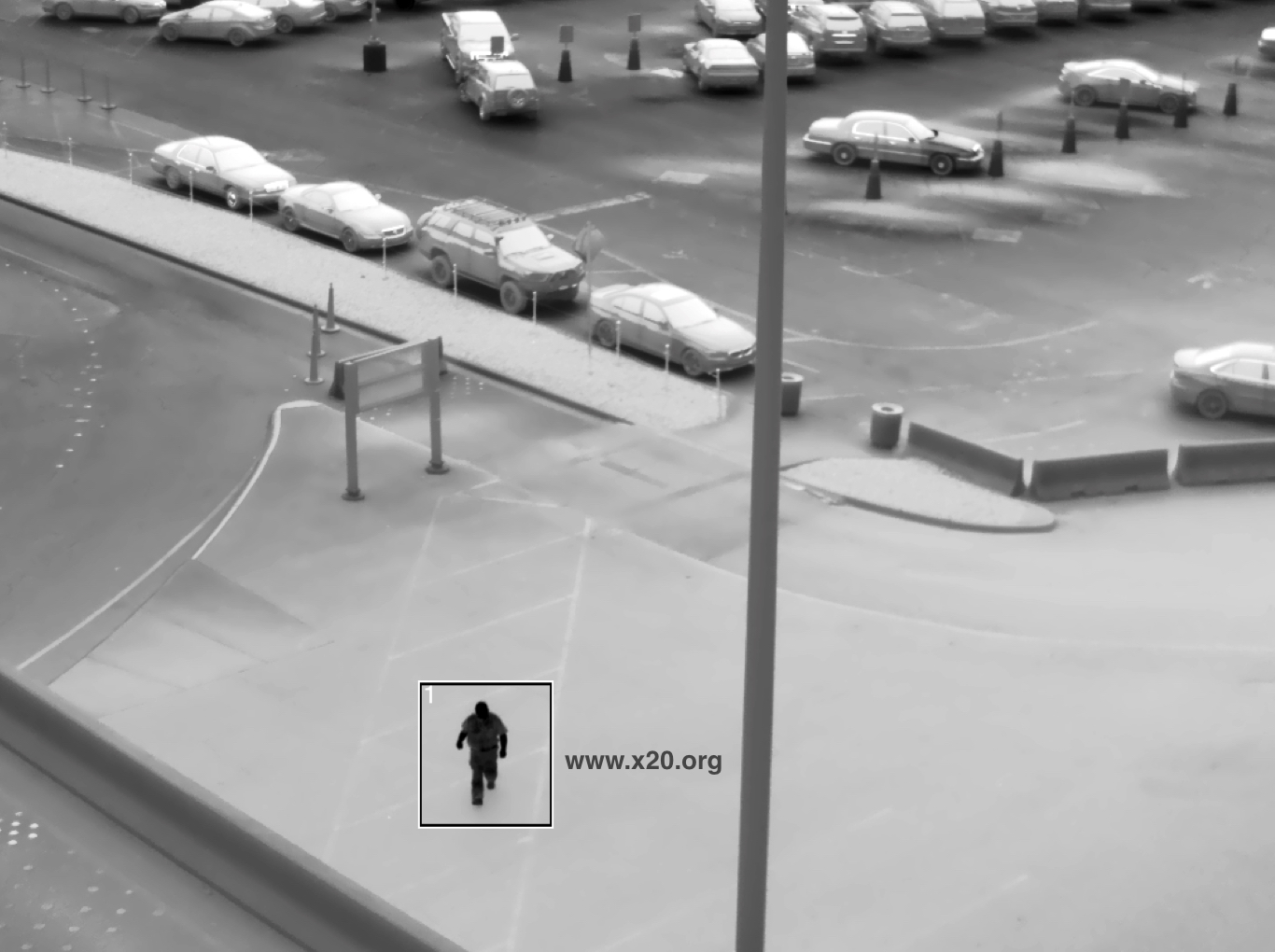
The imperative for small size and light weight has forced mfg’s to a common material set able to withstand harsh environmental
conditions such as the stress placed on UAV takeoffs and landings. “The tarmac in the Middle East can be 120 degrees, and the payload must go to
thousands of feet a few minutes later where it is much colder,”
As electro-optical Infrared (Thermal imaging FLIR camera) drone thermal flir gimbal (EOIR FLIR) payloads for unmanned vehicles must continue to shrink in size,
the engineering challenges become heavier and force engineers to make some custom designs where years ago they would have considered only off-the-shelf solutions.
Many thermal cameras and shortwave infrared (SWIR) cameras available off the shelf are not made to withstand the physical rigors of small UAV, As a result,
Companies have been forced to evaluate the size of electro-mechanical elements of these sensors, and invest in new detector technology for electro-mechanical components
Custom design like this does not come cheaply, but electro-optical payload designers are seeking cost savings elsewhere.
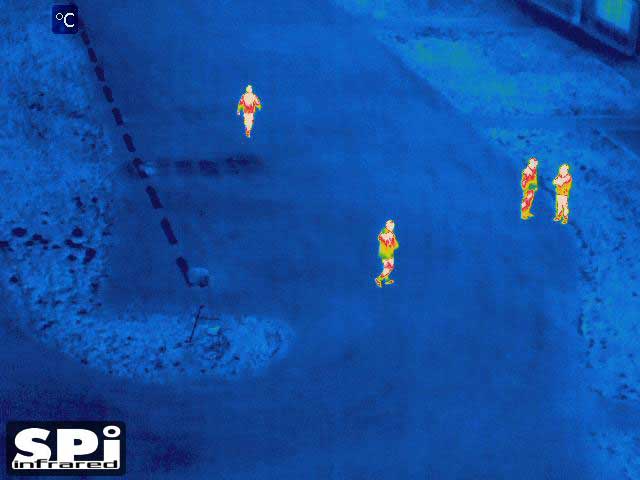
The Evolution of Small lightweight affordable EOIR Thermal imaging Gimbal Turret Payloads incorporating
FLIR TV SWIR MWIR LWIR, CCD, BSTFA, Color Night vision, Cooled and Uncooled Infrared Technology will continue
To advance with the advent of smaller more efficient and sensitive detectors and lasers, The Gyro Stabilization will Get much better and smaller as well

Our gimbals now come standard with long range zoom 1920 x 1200
HD BSI CMOS EO Camera
And 1280 x 1024 ultra sensitive HD hand selected
long range zoom IR camera.
The M7D cooled MWIR midwave thermal Mini UAV UAS drone thermal flir gimbal Payload Represents one of the smallest, lowest cost & lightest stabilized MWIR EOIR cryo-cooled Gimbal in the market today!
Complete cryogenically cooled MWIR midwave thermal long range zoom EO-IR gimbal camera systems can house long range LWIR MWIR SWIR high-definition video tracking, target tracking and image enhancement and processing capabilities. Multi sensor gimbal payload systems enable users to select a range of cameras and sensors unique to individual mission requirements and can be deployed onboard a broad selection of fixed-wing UAVs, unmanned helicopters, UGVs and USVs. We have laser pointers and LRF laser rangefinder options as well.
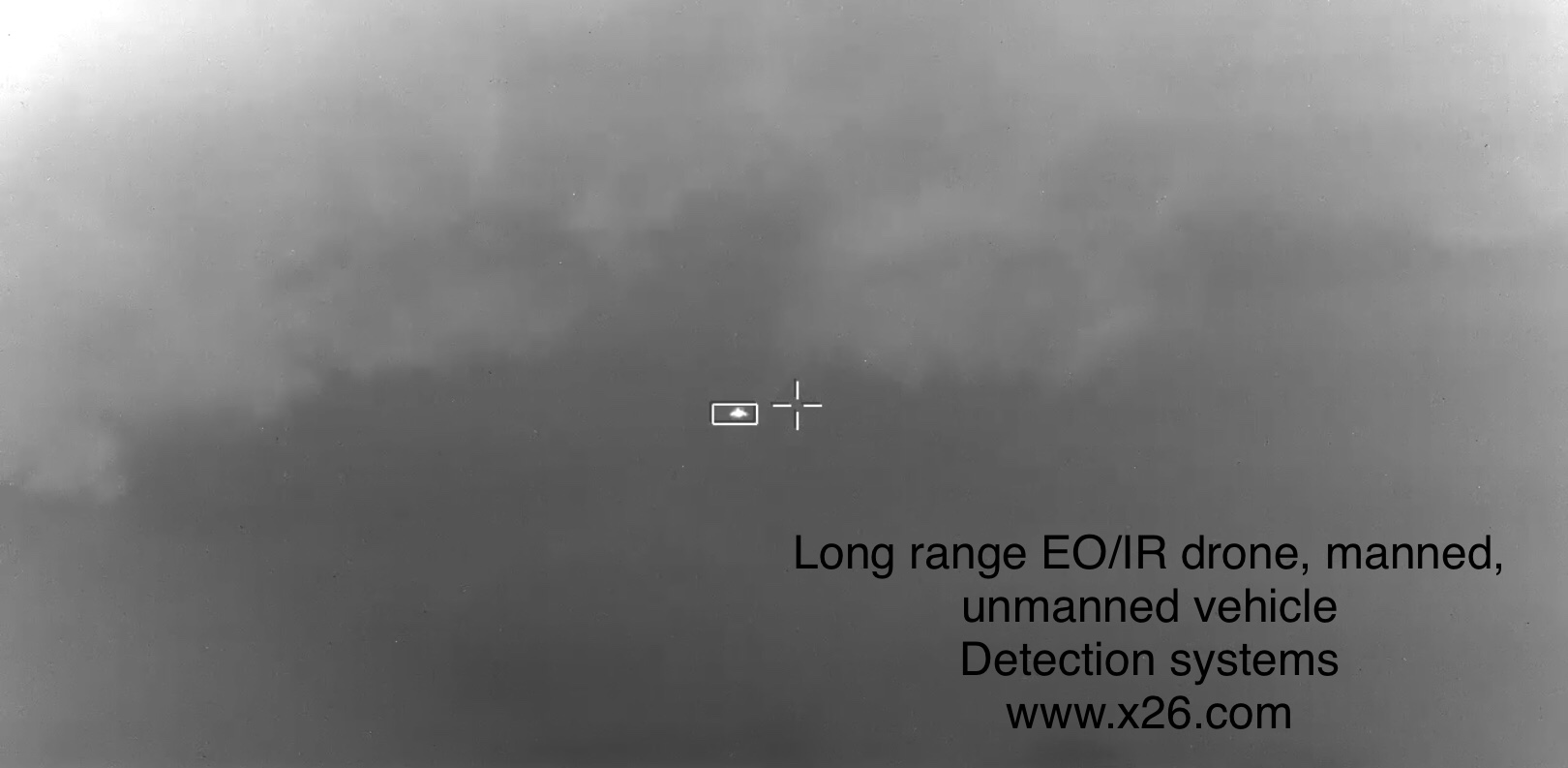
EO IR Sensors for UAVs
EO-IR cooled MWIR midwave thermal sensors and camera systems are suited to a broad spectrum of unmanned aerial platforms, including VTOL multirotor UAVs, fixed-wing and hybrid UAVs, as well as tethered drones, aerostats and balloons. In addition they can be fitted to fixed site installations, unmanned ground vehicles (UGV) and unmanned surface vehicles USV).
Miniature cooled MWIR midwave thermal EO/IR Gimbals
Developed for short, medium and long-range aerial missions, SPI cooled MWIR midwave thermal EO/IR gimbal payloads for UAVs are designed to meet a variety of SWAP (Size Weight and Power) requirements. Often miniature EO/IR gimbals are engineered for specific mission types and conditions, for example daytime, night-time and tactical operations. Lightweight and easy to mount, they can be efficiently swapped out depending on drone and/or mission requirements.
Cooled MWIR midwave thermal Gyro-Stabilised EO/IR Gimbals
Depending on the type and maximum payload capacity of the UAV or unmanned system, cooled midwave thermal gyro-stabilized EO/IR gimbals can have 2, 3 or 4 axis:
-
2-axis cooled mwir flir gimbals – gyro stabilized pitch and roll
-
3-axis cooled mwir thermal imaging flir payloads – gyro stabilized yaw, pitch and roll
-
4-axis mwir cooled flir thermal IR systems – gyro stabilized yaw, pitch and roll, plus up and down motion

